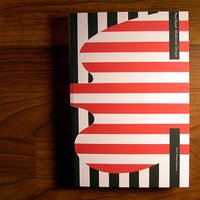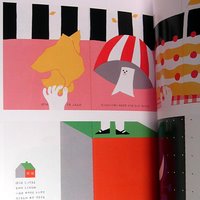In the opening session of the Symposium, four presenters offered insights and examples of value creation in a session titled "Perspectives and Experiences in Evaluating and Managing Intangible Assets."
Intended for both public and private sectors, the first day's events were attended by more than 400 policymakers, business leaders, academic experts, entrepreneurs, designers and creative professionals. The presentations and discussions were in English, with professional translation.
-------------------------------------------------------------------------------------
The speakers for the opening session were:
-Keita Nishiyama, Visiting Professor at the Graduate School of Public Policy, Chuo University
-Taketoshi Sato, Managing Director of Wise-Wise, a design and lifestyle company based in Tokyo.
-Ruben Toral, Group Marketing Director for Bumrungrad International, the Bangkok-based pioneer in international medical tourism.
-Richard Pyvis, Deputy Chief Executive Officer of CLSA Capital Partners and chairman of a winery in Australia. Pyvis also acted as moderator for the three-hour session.
-------------------------------------------------------------------------------------
Nishiyama has been exploring the new market conditions in a postmodern, globalized economy that force us to change the rules, change the modes of competition, in order to create value and remain competitive. Challenges include getting beyond pricing power, getting beyond the old modern desire for the big story and recognizing the importance of the small story for value creation. Value creation differentiates the product, the labour to produce it, and the capital investment by focusing on the small story behind the product.
That story is a way of life that differentiates that product, creating a wrinkle in the flat, global world. This can result in comparative advantages that are more sustainable. Value creation thus needs a platform, a local context, and relies on the way that firms and/or communities use this platform to create a product that serves niches of limited but committed consumers.
He used the example of the fashion company Gugendo, which sells more than $10 million annually worth of clothes made from natural materials and traditional methods-both adapted for modern needs-from its design center, factory and shop located in a tiny village in rural Japan.
Pyvis used his long experience in Asian capital markets to build a premium winery in Western Australia that leveraged changes in the ancient industry to compete on the basis of comparative rather than competitive advantage.
"It's really about know-how," whether that comes from education, experience or accident. That expertise allows you to find and release hidden values, he said.
By leveraging an uncompromising team of winemakers and the very latest production methods with conservative discipline in their borrowing and spending, Stella Bella and its related labels locked in suppliers and a limited-but-loyal base of customers to become one of Australia�s top rated wineries in the remarkably short span of only seven years.
Likewise Sato has built a successful enterprise, Wise Wise, by working in a collective way, with absolute dedication, towards the comfort and happiness of his customers, workers, and suppliers. The strength of his designs for lifestyle products and commercial interiors--- including the site of the G8 Summit in Okinawa, Japan--rest in part on his commitment to local styles and techniques at some of the more than 40 factories around Asia that work with him to create the products he uses.
He described the process of how he and his team of 28 employees first imagine the elements of comfort that will be meaningful to his customers, and then research competitors merely as a reference before physically searching out possible products and manufacturers to fulfill their design ideas. Once found, he will physically travel to those factories and begin the process of building a relationship based on a mutual understanding of the philosophy behind the designs. One example is a chair of contemporary design manufactured in Bangkok, using li-bhao and weaving techniques that date back more than 150 years. Each quality chair takes two or three weeks to make. A second example is a similar chair from Malaysia that, however, uses a different material and weaving technique indigenous to that location. The integrity of the whole project and the positive relationship of all those involved, from friends to bankers, remains a crucial element in how Wise Wise has succeeded in creating value.
Toral explained how Bumrungrad was transformed in only a few years from a community hospital in Bangkok into an international success story with more overseas patients than any other hospital in the world. The company looked at emerging global trends in healthcare, such as aging populations, rising costs and intensity of treatment and inadequate health coverage. They also saw how they could take advantage of borderless technologies and worldwide medical know-how and use the Internet to build global brand power.
Leveraging local costs advantages, they are able to offer world-class medical services for only 12 percent of what those procedures would cost in the United States. By adding resort-like accommodations and the renowned hospitality of Thai culture, Bumrungrad attracts 350,000 international patients per year.
+:+:+:+:+:+:+:+:+:+:+:+:+:+:+:+:+:+:+:+:+:+:+:+:+:+:+:+:++:+:+:+:+:+:+

Paul Rand: Modernist Design
Franc Nunoo-Quarcoo
ISBN : 1890761036



(ห้องทำงานของคุณปู่พอล แลนด์--เขตปลอดคอมพิวเตอร์ ^_^)
We know Paul Rand through the stunning advertising, editorial, publishing, institutional, identity, corporate and intellectual legacy he left behind. A major figure at the epicenter of 20th-century design, his impact on modern communication practice and theory was unparalleled. For him, modernism was a way of life and a form of belief, not a style. Like his European colleagues, he understood modernism’s tenets as a something that could be employed to better human experience in the modern world. Whether he was designing for the American Broadcasting Company, IBM Corporation or United Parcel Service, or teaching at Cooper Union or Pratt Institute, Rand gave life to his art, definition to graphic design and a reputation for quality to a discipline that needed it. His was an early voice in proposing the essence of modernist theories in visual communication, and he was both ruthlessly pragmatic and startlingly visionary. His passion for his subject and his understanding of the theories and realities of perception and communication were immense, and he was often able to illuminate for the layperson the complexities and accomplishments of his triumphant art.~Rand’s contemporaries, students and friends knew him as a man even more extraordinarily cultivated and diverse in his talents and interests—here their diversity of voices combine to give a vivid, personal and uniquely informative introduction to Rand and his achievements. A compendium of essays, interviews, photographic reproductions, a contextual timeline and an extensive bibliography, Paul Rand: Modernist Design adds to the growing literature on Rand, helping to place him in the proper context within a century of innovative art, design, architecture and technology.
Texts by Derek Birdsall, Ivan Chermayeff, Shigeo Fukuda, Milton Glaser, Diane Gromeala, Jessica Helfand, Steven Heller, Armin Hoffmann, Takenobu Igharashi, John Meada, Richard Sapper, Wolfgang Weingart and Massimo Vignelli.
+:+:+:+:+:+:+:+:+:+:+:+:+:+:+:+:+:+:+:+:+:+:+:+:+:+:+:+:++:+:+:+:+:+:+
Book bought:
-
Book read:
-Paul Rand: Modernist Design--Franc Nunoo-Quarcoo

No comments:
Post a Comment